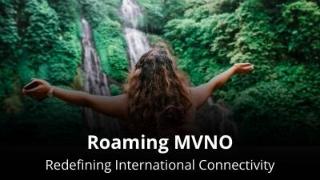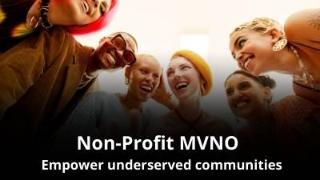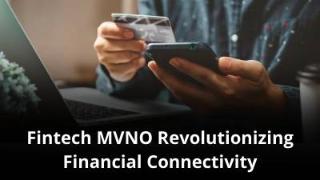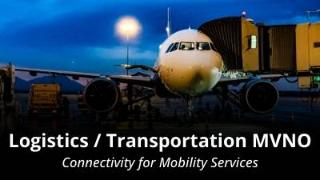Introduction about starting a Non-Profit or Foundation MVNO/IOT
The Non-Profit / Community MVNO represents a new frontier in telecommunications, offering mobile services tailored to diverse community groups and non-profit organizations. These MVNOs prioritize social impact and inclusivity by addressing specific community needs and championing social causes. By leveraging mobile technology, Non-Profit / Community MVNOs empower organizations to extend their mission digitally and strengthen connections with members, driving social change and inclusive connectivity.
What do you need to know about starting a Non-Profit or Foundation MVNO
- What are the advantages and disadvantages ?
- What are the Revenue sources and Pricing strategy?
- What are suitable segments?
- What kind of Mobile bundles are typically used?
- What kind of ARPU can you expect?
- What is the Go-to-Market Strategy?
- What are some points to think of for the Marketing Plan?
- What kind of financing is to be expected?
- What kind of MVNO type is typically used?
- What is the expected time for the launch?
- What is the expected impact of 5G?
- What is the expected impact of eSIM?
- IOT and its Relation to Non-Profit MVNOs
- Benefits of Launching Non-Profit MVNO/IOT
- Frequently Asked Questions
- Summary
What are advantages & disadvantages of a Non-Profit or Foundation MVNO/IOT?
Advantages: Launching a non-profit or community focused MVNO offers a profound opportunity to address digital inequality and promote social impact. By providing affordable mobile services to underserved communities, this model can significantly enhance connectivity and foster digital inclusion. The social mission behind such an MVNO resonates with stakeholders and supporters, attracting funding and partnerships aligned with the goal of improving quality of life through accessible telecommunications.
Disadvantages: Establishing and sustaining a non-profit MVNO presents notable challenges. Securing consistent funding for operations and expansion can be a primary hurdle, as this model relies heavily on grants, donations, and subsidies. Moreover, navigating regulatory complexities in the telecommunications sector requires expertise and resources, potentially hindering the scalability and long-term viability of the venture.
What are the Revenue sources and Pricing strategy?
Revenue Sources: Revenue generation for a non-profit or community focused MVNO primarily relies on alternative sources compared to traditional commercial ventures. This model typically seeks funding from donations, grants, subsidies, or strategic partnerships with organizations aligned with the social mission. By leveraging philanthropic support and impact investment, the MVNO can sustainably fund operations while prioritizing affordability for underserved communities.
Pricing Strategy: The pricing strategy of a non-profit MVNO emphasizes accessibility and affordability for target populations. Plans are designed to meet essential communication needs at reduced costs, ensuring that the service remains inclusive and beneficial to low-income individuals, rural residents, seniors, students, and other marginalized groups. Transparent pricing structures and straightforward plans enable community members to access mobile services without financial barriers, aligning with the MVNO’s social impact objectives.
What are suitable segments for Non-Profit or Foundation MVNO/IOT?
- Community Centers and Nonprofit Organizations: Providing tailored mobile services for staff, volunteers, and members of community centers and nonprofit organizations.
- Low-Income Families and Individuals: Offering affordable mobile plans to financially disadvantaged families and individuals, ensuring access to essential communication services.
- Senior Citizens in Assisted Living Facilities: Providing specialized mobile services for seniors living in assisted care or retirement communities, focusing on ease of use and accessibility.
- Underserved Schools: Offering mobile connectivity solutions for students attending schools or educational programs in economically disadvantaged areas.
- Homeless Shelters: Facilitating mobile connectivity for residents of homeless shelters and transitional housing programs, supporting their communication needs during transitional periods.
- Rural Communities with Limited Infrastructure: Serving residents of rural communities with limited access to traditional telecommunication services, bridging the digital divide in remote areas.
- Immigrant Communities: Providing mobile plans tailored to the needs of immigrant communities, including affordable international calling options and multilingual support.
- Community Health Clinics / Centers: Offering mobile services for patients and staff of community health clinics and nonprofit healthcare centers, enabling better communication in healthcare delivery.
- Conservation Groups: Partnering with environmental organizations to provide mobile services for activists and members engaged in conservation efforts.
- Humanitarian Aid Organizations: Providing emergency communication services during natural disasters or humanitarian crises, supporting disaster response efforts and community resilience.

What kind of Mobile bundles are used for this type of MVNO/IOT?
Data: High-speed data for accessing educational resources, online training programs, and community forums. Enables users to stay connected for learning and information sharing.
Voice: Reliable voice calls for coordinating volunteer efforts, conducting outreach programs, and providing support services. Ensures effective communication within the non-profit organization and with community members.
SMS: Instant alerts for important announcements, event invitations, and donation campaigns. Facilitates quick communication and engagement with supporters and beneficiaries.
What kind of ARPU can you expect for a Non-Profit or Foundation MVNO?
ARPU: Low
Why: The Average Revenue Per User (ARPU) for non-profit or community focused MVNOs tends to be lower due to their emphasis on affordability and accessibility for underserved populations. These MVNOs prioritize social impact over maximizing individual user revenue, resulting in modest ARPU figures that reflect their mission-driven approach to serving communities.
Where It Is Based On: This assessment is based on common pricing strategies of non-profit MVNOs, which prioritize affordability for underserved populations, resulting in lower ARPU compared to commercial counterparts.
You need to work out the details in your Financial Plan.

What is the Go-to-Market Strategy for this MVNO?

Launching a Non-Profit/Community MVNO requires a targeted go-to-market approach. Partnering with local community organizations, NGOs, and advocacy groups is crucial to establish credibility and connect with the target audience. Collaborations with community centers and social service agencies can facilitate outreach efforts and promote the MVNO’s mission-driven services.
Engaging in grassroots outreach, such as organizing community events, volunteering drives, and awareness campaigns, helps build trust and visibility within the target communities. Leveraging social media platforms and community forums for direct engagement and storytelling can amplify the MVNO’s impact and attract supporters.
- Target Audience: Non-profit organizations, community activists, volunteers, social service recipients, and supporters of social causes.
- Pricing Strategy: Affordable plans tailored to the needs of non-profit organizations and community members, with options for bulk discounts or group subscriptions.
- Distribution Channels: Partnering with community centers, churches, local businesses, and social service agencies for local distribution and sign-up events.
- Promotion: Highlighting community success stories, offering special discounts for non-profits and volunteers, and organizing community-driven campaigns to promote social causes.
- Customer Support: Dedicated support for non-profit organizations, community members, and volunteers, with personalized assistance for specific community needs and initiatives.
What are points to think of for the Marketing Plan?
To effectively market your Non-Profit/Community Mobile Virtual Network Operator (MVNO), emphasize the unique social impact and community-focused services. Develop compelling content showcasing community success stories, volunteer efforts, and partnerships with local organizations. Implement targeted promotions, collaborate with community influencers, and participate in community events to strengthen brand presence. You need to work out below points in your Marketing Plan.
USP: Highlight tailored mobile services designed for non-profits, volunteers, and community members, emphasizing social impact and affordability.
Content Creation: Produce engaging content featuring community stories, volunteer spotlights, and initiatives supported by the MVNO’s services.
Promotions: Offer special discounts for non-profit organizations, highlight community-driven campaigns, and provide incentives for group subscriptions or referrals.
Partnerships: Collaborate with local community centers, NGOs, and social service agencies for co-branded initiatives and outreach efforts.
Feedback Loop: Gather feedback from community members on service satisfaction, impact, and areas for improvement to continuously enhance the MVNO’s offerings.

What kind of financing is to be expected for Non-Profit or Foundation MVNOs?

Financing: Moderate
The financing requirements for a Non-Profit/Community MVNO typically fall into a moderate range. Funding is needed for community outreach initiatives, partnerships with local organizations, and development of tailored services for non-profits and community members. Investments may be directed towards marketing campaigns, content creation, and technology infrastructure to support the MVNO’s mission-driven approach.
You need to work the details in your Financial Plan.
What kind of MVNO type is typically used for Non-Profit or Foundation MVNOs?
MVNO Type: Light MVNO
Non-Profit/Community-focused MVNOs often opt for a Light MVNO model. This choice provides flexibility and customization while minimizing infrastructure investment and operational complexity. With a Light MVNO, the focus is on tailored offerings and partnership collaborations, enabling efficient delivery of services aligned with the MVNO’s mission-driven initiatives.
See also: Different types of MVNOs

What is the expected time to launch for Non-Profit or Foundation MVNOs?
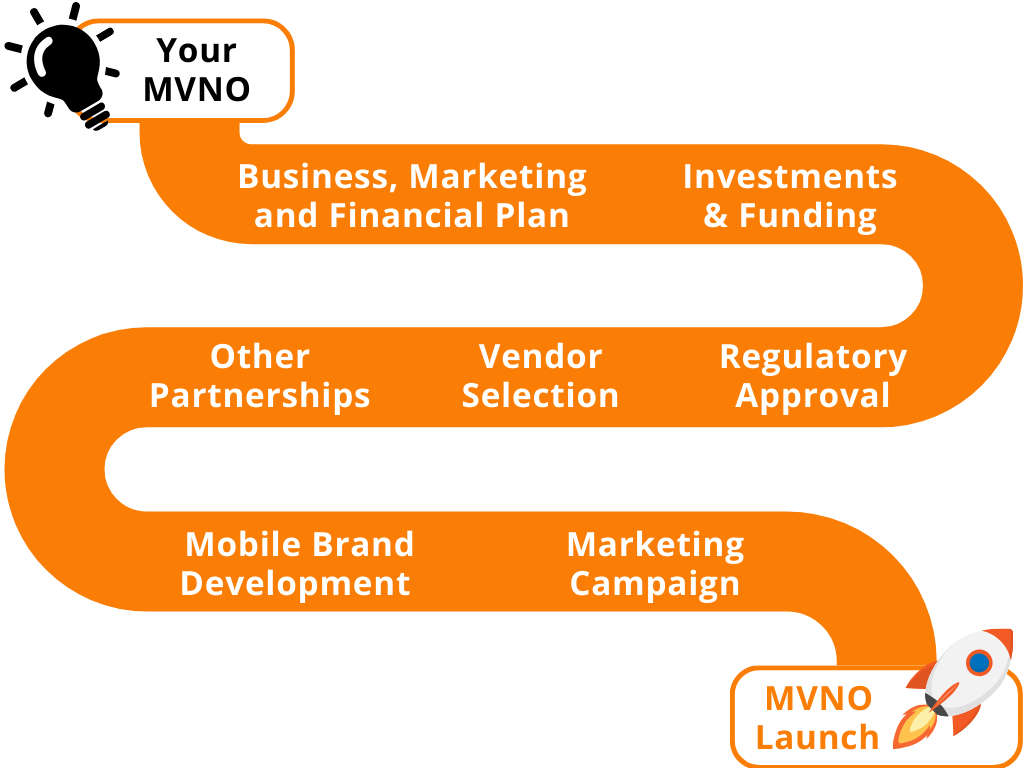
Expected Time to Launch: 6-12 months
Launching a non-profit or community focused MVNO typically involves building partnerships with organizations, developing a tailored service platform, and ensuring compliance with regulatory requirements.
By leveraging existing network infrastructure through light MVNO arrangements and prioritizing essential features for initial deployment, the launch timeline can be expedited. Agile development methodologies, cloud-based solutions, and collaboration with experienced technology partners can further accelerate the process, enabling the MVNO to serve its community quickly and effectively.
What is the expected impact of 5G for Non-Profit or Foundation MVNOs?
5G technology can enhance the reach and quality of mobile services, potentially benefiting communities by improving connectivity, enabling new applications, and supporting innovative digital solutions. For more details see the Mobile Network section.

What is the expected impact of eSIM for Non-Profit or Foundation MVNOs?
IOT and its Relation to Non-Profit MVNOs
The Internet of Things (IoT) presents significant opportunities for non-profit MVNOs to extend their reach, enhance their services, and more effectively address the needs of the communities they serve. While the original text focused on entertainment and fan engagement, non-profit MVNOs can leverage IoT for entirely different, but equally impactful, purposes. Here are some key applications:
Wearable Technology and Community Health/Safety: Instead of tracking fan activity, wearable technology can be used to monitor the health and safety of vulnerable populations. For example, connected medical alert systems can provide rapid access to emergency services for elderly individuals or those with chronic conditions. Wearable trackers can also be used to monitor the location and well-being of individuals in high-risk situations, such as those experiencing homelessness or domestic violence. With appropriate consent and data privacy safeguards, this data can be used to provide timely interventions and support.
Data Analytics and Impact Measurement: Instead of analyzing fan behavior, non-profit MVNOs can use data analytics to measure the impact of their programs and services. Data collected from IoT devices can provide valuable insights into program effectiveness, resource utilization, and community needs. For example, data from connected water quality sensors can be used to assess the impact of clean water initiatives in developing countries. Data from connected health monitoring devices can be used to track the effectiveness of health interventions in underserved communities. This data can be used to refine programs, demonstrate impact to donors, and advocate for policy changes.
Connected Devices for Community Engagement and Education: Instead of interactive games related to entertainment, connected devices can be used to facilitate educational programs, community outreach initiatives, and access to essential information. For example, tablets with pre-loaded educational apps and subsidized data plans can be provided to students in underserved communities. Connected sensors in community gardens can provide real-time data on soil conditions and weather patterns, supporting urban farming initiatives and educational programs.
Smart Environments and Community Resource Management: Rather than focusing on venues, IoT sensors can be deployed in community centers, shelters, or public spaces to monitor environmental conditions, resource usage, and occupancy. This data can be used to optimize resource allocation, improve energy efficiency, and ensure the safety and comfort of individuals using these facilities. For example, sensors in a homeless shelter could monitor occupancy levels and identify periods of high demand, allowing staff to better allocate resources and provide appropriate support.
By integrating IoT data and services into their offerings, Non-Profit MVNOs can provide more effective and impactful services to the communities they serve, moving beyond basic connectivity to address critical social needs and create positive change. They can differentiate themselves by demonstrating a clear commitment to their mission and leveraging technology for social good.
Benefits of Launching Non-Profit MVNO/IOT
Fundraising and Donor Acquisition: Leverage the MVNO platform to connect with potential donors and solicit contributions. Offer special mobile plans with a portion of the proceeds going towards your non-profit’s cause.
Enhanced Volunteer Management: Coordinate volunteer activities and communication more effectively through features like group messaging or targeted alerts within mobile plans designed for volunteers.
Connected Devices for Disaster Relief: Deploy connected devices for disaster relief efforts, such as communication devices for first responders, tracking devices for supplies, and sensors for monitoring affected areas.
Community Outreach and Awareness: Disseminate information about your non-profit’s mission and activities directly to mobile users. This can be done through SMS blasts, targeted content within the MVNO app, or partnerships with other non-profits for cross-promotion.
Data-Driven Decision Making: Gain valuable insights into donor demographics and behavior patterns through user data analysis. This information can be used to refine fundraising strategies, personalize communication efforts, and improve overall donor engagement.
Connected Sensors for Environmental Monitoring: Utilize IoT sensors for environmental monitoring projects, such as air quality monitoring, water quality testing, or wildlife tracking, allowing donors to directly support these initiatives.
Frequently Asked Questions
What is a Non-Profit or Foundation MVNO?
A Non-Profit or Foundation MVNO is a mobile virtual network operator structured as a nonprofit organisation or charitable foundation. Instead of focusing on profit, it prioritises mission-driven goals such as community service, affordable access, education outreach, or bridging the digital divide.
Why start a Non-Profit or Foundation MVNO?
Organisations start Non-Profit or Foundation MVNOs to extend affordable, mission-aligned connectivity to underserved communities, support education or healthcare access, advance digital inclusivity, or deliver specialised services tied to social impact rather than commercial gain.
What legal structures support a Non-Profit MVNO?
Typical legal structures for a Non-Profit MVNO include registered charities, foundations, community interest companies, or 501(c)(3)-like entities in relevant jurisdictions. These structures help clarify mission, governance, tax status, and eligibility for grants or public funding.
How do funding and sustainability work for a Non-Profit MVNO?
Funding can come from grants, donations, partnerships, impact investors, and subsidised wholesale agreements. Sustainability models often blend subsidised or low-cost services with mission funding, operational efficiencies, and partnerships with NGOs, public sector bodies, or socially aligned corporations.
What partnerships are important for launching a Non-Profit MVNO?
Critical partnerships include wholesale network agreements with MNOs or MVNAs/MVNEs, legal and regulatory advisors, community organisations, grantmakers, and aligned tech providers. These partnerships help with connectivity, compliance, distribution channels, and outreach.
What challenges do Non-Profit MVNOs face?
Challenges include securing sustainable funding, navigating telecom regulations, balancing mission goals with operational needs, ensuring quality of service, engaging stakeholders, and measuring mission impact while controlling costs.
Summary
In summary, a non-profit or foundation MVNO presents a unique opportunity to address digital inequality and empower underserved populations through affordable mobile services. While challenges exist, the potential for social impact and community empowerment is substantial, driven by sustainable funding, targeted outreach, and a mission-driven approach to connectivity and inclusion. This business model requires a strategic blend of financial sustainability and social responsibility to achieve lasting positive change.





